- Home
- A Bertram Chandler
Catch the Star Winds Page 21
Catch the Star Winds Read online
Page 21
New Bedford was down at last. Her inertial drive complained for the last time, then lapsed into silence. A telescopic mast extended from high on her hull, at control room level, and from it broke out a flag that fluttered in the light breeze. It was not, Grimes realized, the house flag of the Hummel Foundation, a stylized red dragon on a green field. This standard was white and blue.
Miss Walton, Grimes' secretary, had come to stand with him at the window. "What a funny ensign—what is it supposed to be? It looks like an airship, a blimp in a blue sky—"
The commodore laughed. "I think that the blue is supposed to represent sea, not sky. And that's not a blimp—"
"What is it, then, Commodore?"
"It could be a white whale," Grimes told her.
"Captain Haab to see you, sir," announced Miss Walton.
Grimes looked up from his desk where he had been blue-penciling the stores requisition sent in by the chief officer of Rim Percheron. "Show him in," he told his secretary.
The girl returned to the office followed by Haab. The master of New Bedford was a tall man, thin, towering over the little blonde. There was an oddly archaic cut to his tightly fitting black suit, to his stiff, white linen and black stock. His face was gaunt and deeply tanned between his closely cropped black hair and black chin beard. His eyes were a startlingly pale blue. He walked with a peculiarly jerky motion and from his right lee came a strange faint clicking noise.
Grimes rose to his feet, extended his right hand. "Welcome to Port Forlorn, Captain."
Haab took the commodore's hand in his own almost skeletal claw. "Thank you, sir."
"Sit down, Captain. Tea? Coffee?"
"Coffee if I may, Commodore. Black."
"Will you attend to it, please, Miss Walton? Black coffee for two. And did you have a good voyage out, Captain?"
"A quiet voyage."
"First time I've seen anybody from the Hummel Foundation out here. Of course, we haven't much in the way of exotic fauna on the Rim. Not on the man-colonized planets, that is. Most of our animals were raised from Terran stock."
"I'm not concerned with any of the life forms actually on the planets, Commodore."
A grin softened Grimes' craggy face. "I can guess what you've come for, Captain—" Miss Walton brought in the coffee tray, set it on the desk. Grimes said to the girl. "Would you mind having the projection room ready? You know the films we shall want—those that the admiralty lent me."
"The ones shot on the Lorn-Llanith route, sir?"
"Of course."
"Very good, sir. Oh, would you mind if I asked Captain Haab a question?"
"Go ahead, Miss Walton."
The girl addressed herself to New Bedford's master. "I'm interested in flags, sir. What is the one that you have flying from your ship?"
Haab smiled thinly. "It's my own personal broad pennant. The Foundation allows me to wear it."
"But what is it, Captain?"
"A white whale," replied Haab.
"As I've already told you," grunted Grimes. "And now will you get those films ready?"
"And could you fill me in while we're waiting?" Haab asked Grimes.
"Of course, Captain. I'll start at the beginning."
* * *
"As you know," said Grimes, "we operate lightjammers on the run between the Rim Worlds and the Llanithi Consortium. The lightjammers are the only ships that can have their atomic charges reversed so that they can land on the anti-matter worlds without blowing themselves—and anybody else within ten thousand miles—to glory. The lightjammers had been running into trouble—a strange vessel kept appearing on a collision course, shoving them away to hell and gone off trajectory—"
Haab smiled. "You'll probably be hearing from the Rhine Institute about that. But the Hummel Foundation is concerned with living beings, not ghosts, not even such famous ghosts as the Flying Dutchman."
"Just as well. Since the navy started cleaning up the shipping lanes old Vanderdecken has been conspicuous by his absence. Maybe he's found a home on Atlantia. They still go in for sail in a big way there.
"Well, after the first reports came in I decided I'd better see for myself, so my wife and I took passage from Lorn to Llanith in Pamir. At that time it was thought that the Flying Dutchman was another lightjammer, a foreign ship snooping on our trade routes. But we had with us the Reverend Madam Swithin of the United Primitive Spiritualist Church, going out to Llanith as a missionary. Thanks to her we found out what the Flying Dutchman was and that Vanderdecken was warning us about something.
"So I grounded the lightjammers and sent a report to Admiral Kravitz, urging him to make a full-scale investigation. He did. Luckily our fleet was out on maneuvers at the time so it all fitted in with the war games that were being played. Instead of the usual Redland versus Blueland it was the armed might of the Confederacy versus the Menace from Intergalactic Space. Mphm."
Haab registered strong disapproval. "Not a hunt," he growled, "but a military operation—"
"Of course. If one of our lightjammers had run into a herd of those things—or even a single one—there would have been a shocking mess. Don't forget that the Erikson Drive ships, unlike the Mannschenn Drive jobs, remain in normal space-time while accelerating to the velocity of light and return to NST when decelerating. The energy eaters—"
"Is that what you call them?"
"What else? The energy eaters were a menace to navigation and they were dealt with as such."
"I still don't like it."
"You're not master of a lightjammer, Captain. Oh, all right, all right, you're a big game hunter as well as being a shipmaster. But the EEs don't have nice, horned heads that you can hang on the wall. They don't have pretty pelts that can be made into fireside rugs."
"I want a living specimen."
"I doubt if your marvelous zoo in Central Australia would be able to accommodate it."
"A zoo need not be on a planetary surface, Commodore. The plans for an orbital zoo have been drawn up, with lines of magnetic force among a grouping of small artificial satellites forming the bars of a cage. If I capture a specimen the Foundation will have everything ready for its reception when I get it back to Earth."
"If you capture a specimen. The navy's doing a good job."
Haab inhaled deeply from the villainous black cigar that he was smoking as a counter measure to Grimes' foul pipe. He withdrew the thing from his mouth and his right hand, holding it, rested on his knee. Grimes sneezed. There was more than tobacco smoke in those acrid fumes.
He said hastily, "You're setting yourself on fire, Captain."
The other man looked down at the little charred circle in the cloth of his trousers, beat out the embers with his left hand.
Grimes said, "You must feel deeply on the subject. You didn't notice that you were burning yourself."
"I do feel deeply, Commodore. But this leg's prosthetic. I lost the original on Tanganore when a harpooned spurzil took retaliatory action. The Tanganorans fitted me out with this tin leg and, by the time I got back to Earth where I could have had a new flesh-and-blood one grown, I'd gotten used to it. In any case—I couldn't spare the time for a regeneration job."
"Tanganore? That's in the Cepheid Sector, isn't it? And what is a spurzil?"
"A sort of big armor-protected whale. White."
"And now you're hunting Moebius Dick himself."
"Moebius Dick, Commodore?"
"I thought that your private flag was supposed to represent the original Moby Dick."
"No. It represents the spurzu that took a piece of me. It's a reminder to myself to be careful. But Moebius Dick?"
"Wait until you've seen the films, Captain Haab."
* * *
Grimes sat with Haab in the darkened projection room and Miss Walton started the projector. Slowly the screen came alive and in it glowed words: OPERATION RIMHUNT. FOR EXHIBITION TO AUTHORIZED PERSONNEL ONLY.
The credit titles were succeeded by a spoken account of what was happening, by
some quite good shots of lightjammers arriving at and departing from Port Erikson, by an excellent shot of Herzogin Cecile making sail. The voice of the commentator said, "But these ships, the pride of our merchant navy and the first vessels successfully to trade with the anti-matter Llanithi Consortium, discovered that all was not plain sailing." Grimes contrived to wince audibly. "A new menace appeared on the trade routes and only by taking violent evasive action were the lightjammers able to escape certain destruction."
"No mention of Vanderdecken," commented Haab.
"Our navy refuses to believe in ghosts," Grimes told him. "Their Psychologists have a marvelous theory that the Flying Dutchman was no more than a projection of our own precognitive fears, a visual presentation of a hunch."
The commentator went on:
"Commodore John Grimes of the Rim Worlds naval reserve—also astronautical superintendent of Rim Runners—was a passenger aboard the lightjammer Pamir. He was in her control room when the master, acting upon a hunch, trimmed his sails in order to make a large alteration of course to port—"
"I like that!" snorted Grimes. "I had to bully the stubborn bastard into making that alteration."
"—deciding that there must have been some unseen danger ahead of the ship, Commodore Grimes made a report to Admiral Kravitz, recommending that a thorough survey be made of the trade routes between Lorn and Llanith. At the time the fleet was out on maneuvers off Eblis and the frigates Rim Culverin and Rim Carronade were detached to carry out investigations in the neighborhood of Llanith."
The last shot of a lightjammer under sail faded from the screen, was replaced by one of a conventional warship proceeding under Mannschenn Drive, obviously taken from a sister ship. In the background glowed the warped, convoluted Galactic Lens, an oval of luminescence twisted through and into an infinity of dimensions. The outline of Rim Culverin herself was hard and clear.
"Arriving at the position in which, according to Commodore Grimes' report, the danger was thought to exist, Rim Culverin and Rim Carronade reduced to cruising speed and initiated a search pattern. Both vessels, of course, had their mass proximity indicators tuned to maximum sensitivity. Eventually a target was seen in the screens, the indications being that it was something extremely small, with barely sufficient mass to register. It must be pointed out, however, that collision with a dust mote at a speed close to that of light could have serious consequences—"
"How do your lightjammers guard against that?" asked Haab.
"We don't. Cosmic dust is something that we don't have any of out on the Rim."
"What about hydrogen atoms? Wouldn't they be as bad?"
"We don't have any of those either—or the operation of lightjammers would be impossible. But look!"
"—inertial drive only, Rim Culverin and Rim Carronade approached the target with caution. Radar had been put into operation when the ships made their reentry into normal space-time and proved more effective than the mass proximity indicator had been. The original target was resolved into a cluster of targets, each presenting an echo in the screen equivalent to that given by a small ship, such as a scout. Furthermore, as the range decreased to a hundred kilometers and less, the targets could be seen visually."
In the screen was what looked like a star cluster, bright against the intergalactic nothingness.
"The cautious approach was continued—"
The effect now was more like a swarm of fireflies than a star cluster. The points of light were in rapid motion, weaving about each other in an intricate dance. The ship from which the film had been taken was approaching the shimmering display—probably magnification was being stepped up at the same time. If it were not—then the approach was far from cautious.
Each of the dancing lights possessed a definite shape.
"Haloes," murmured Haab.
"Not haloes," Grimes told him. "Look more closely, Captain."
Nonetheless, haloes they could have been, living annuli of iridescence—but twisted haloes. As they rotated about their centers they flared fitfully, seemed to vanish, flared again.
"What do they remind you of?" asked Grimes.
"The antenna of a Carlotti beacon or transceiver," replied Haab after a moment's thought. "But circular, instead of elliptical—that's what I thought when I saw the stills that the Survey Service passed on to the Foundation. It's more obvious when you see the things in motion."
"In other words," said Grimes, "a Moebius Strip. But watch."
The voice of the commentator came up again. "Rim Culverin dispatched a drone to make a closer investigation—"
There was a shot of the little craft—a spaceship in miniature, bristling with a complex array of scanners and antennae—pulling out and clear from the parent ship. Rim Carronade's camera tracked her until she was too distant for details to be distinguished. Then this picture was replaced by the one seen by the probe's electronic eyes. The small unmanned craft was making a close approach to one of the whirling rings of light. The enigmatic thing was almost featureless, although flecks of greater luminosity on its surface were indicative of its rotation. It was a Moebius Strip made from a wide, radiant ribbon. It flared and dimmed like an isophase beacon with a period synchronized with that of its revolution. It could have been a machine—yet it gave the impression that it was alive. It filled the screen, spinning, pulsing—and then there was blackness.
The commentator said in a matter of fact voice, "The drone went dead. It had not been destroyed, however. Powerful telescopes and radar aboard both ships could still pick it up. But it was obvious that all its electronic equipment had suddenly ceased to function.
"It was obvious, too, that the cluster of mysterious entities was approaching the frigates at high velocity. Captain Laverton, aboard Rim Carronade, ordered a withdrawal from the scene. Rim Carronade and Rim Culverin proceeded west, first at normal cruising speed, then increasing to maximum inertial drive acceleration. But the hostile beings steadily decreased the range. Rim Carronade and Rim Culverin were obliged to open fire with their stern-mounted laser cannon—"
II
The screen showed the false star cluster again, but its individual components were no longer dancing about each other, maintaining a globular formation—they were holding a steady trajectory. They were no longer alternating between light and darkness. Every now and again they would flare into increased brilliance, which did not diminish.
"Realizing that laser was an encouragement rather than a deterrent," the commentator went on, "Captain Laverton decided to take evasive action and ordered the starting of the Mannschenn Drive units aboard his ship and Rim Culverin, reasoning that once the frigates were out of synchronization with normal space-time the hostile entities would be unable to press home their attack. At first it seemed that these tactics would be successful, but after a lapse of no more than fifteen seconds the things reappeared at even closer range than before, obviously matching temporal precession rates. Captain Laverton returned to normal space-time briefly—and in the few seconds before he restarted his Mannschenn Drive, just as the entities reappeared off Rim Carronade's quarter, launched a torpedo with a fission warhead fused for almost instant detonation. This defensive action was successful."
The screen displayed a fireball of incandescent plasma, expanding and thinning, the obvious aftermath of an atomic explosion in deep space. Through the cloud of glowing gases could be seen only a mere half dozen of the entities—earlier there had been at least fifty of the things.
"Returning to NST, Captain Laverton observed that the majority of the creatures had been destroyed and that the few survivors were sluggish and—he thought erroneously—badly injured. Two were dispatched by laser fire. The remaining four retreated rapidly, eluding the frigates.
"The first phase of Operation Rimhunt was over."
"The next spool, sir?" asked Miss Walton.
"Not just yet, if you don't mind," replied Haab. Then: "I beg your pardon, Commodore. But I'd like to talk about what we've just seen first."
"Talk away, Captain." Grimes refilled and lit his pipe. "Talk away."
"As you know, Commodore, I've seen the stills and read the reports that your navy passed on to the Federation Survey Service, that the Survey Service, in its turn, passed on to the Foundation. I was present at most of the conferences of the Foundation's boffins. I didn't understand all they were saying, but I caught the general drift. The energy eaters, as they dubbed them, are just that. Their peculiar Moebius Strip configuration ensures that their entire surface is exposed to any source of radiation. According to our mathematicians they must be susceptible to magnetic fields—so the cage that our people are designing should work. The creatures are also susceptible to beamed Carlotti transmissions, which could be used to prevent a caged entity from escaping by desynchronizing with normal space-time."

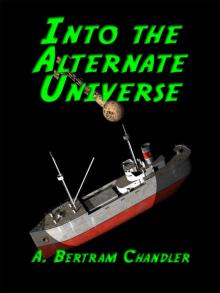 Into the Alternate Universe
Into the Alternate Universe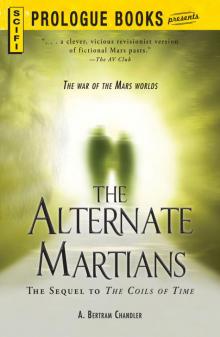 The Alternate Martians
The Alternate Martians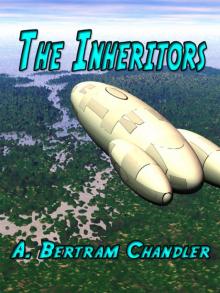 The Inheritors
The Inheritors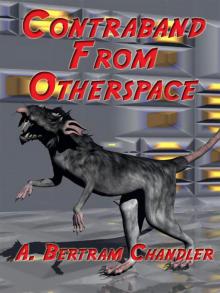 Contraband From Otherspace
Contraband From Otherspace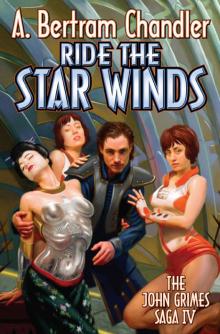 Ride the Star Winds
Ride the Star Winds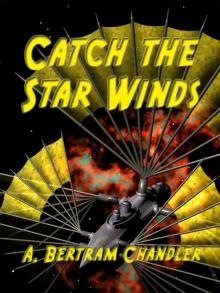 Catch the Star Winds
Catch the Star Winds Spartan Planet
Spartan Planet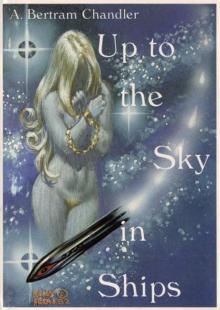 Up to the Sky in Ships
Up to the Sky in Ships The Hard Way Up
The Hard Way Up The Gateway to Never
The Gateway to Never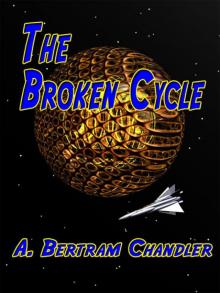 The Broken Cycle
The Broken Cycle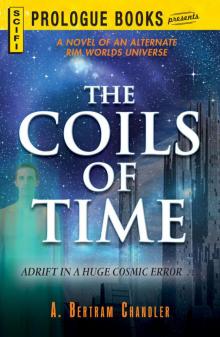 The Coils of Time
The Coils of Time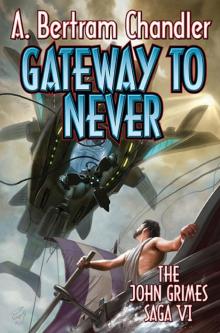 Gateway to Never (John Grimes)
Gateway to Never (John Grimes)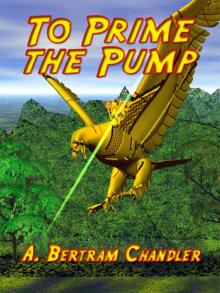 To Prime the Pump
To Prime the Pump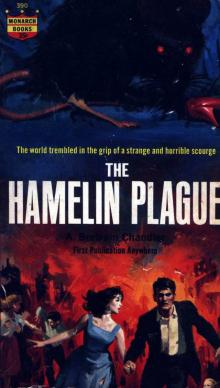 The Hamelin Plague
The Hamelin Plague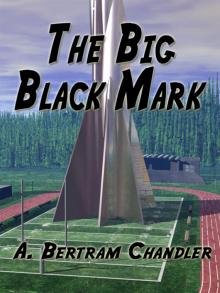 The Big Black Mark
The Big Black Mark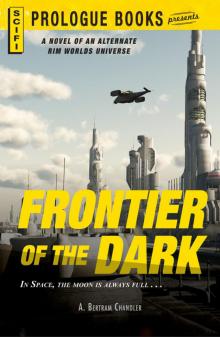 Frontier of the Dark
Frontier of the Dark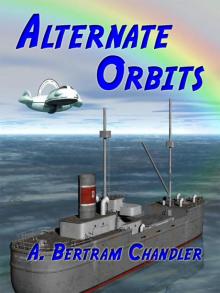 Alternate Orbits
Alternate Orbits The Way Back
The Way Back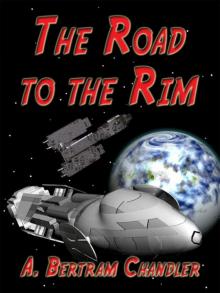 The Road to the Rim
The Road to the Rim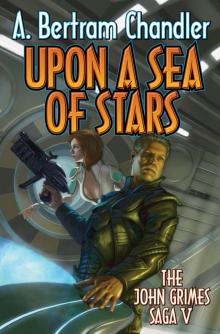 Upon a Sea of Stars
Upon a Sea of Stars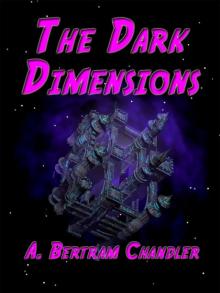 The Dark Dimensions
The Dark Dimensions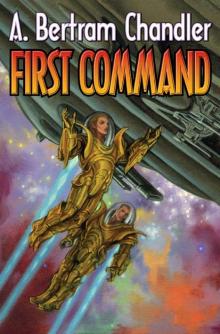 First Command
First Command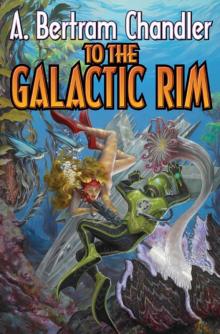 To the Galactic Rim: The John Grimes Saga
To the Galactic Rim: The John Grimes Saga The Rim Gods
The Rim Gods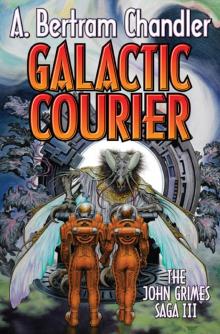 Galactic Courier: The John Grimes Saga III
Galactic Courier: The John Grimes Saga III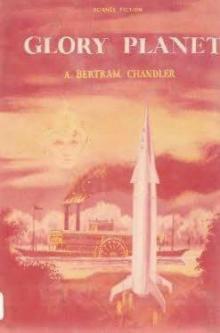 Glory Planet
Glory Planet